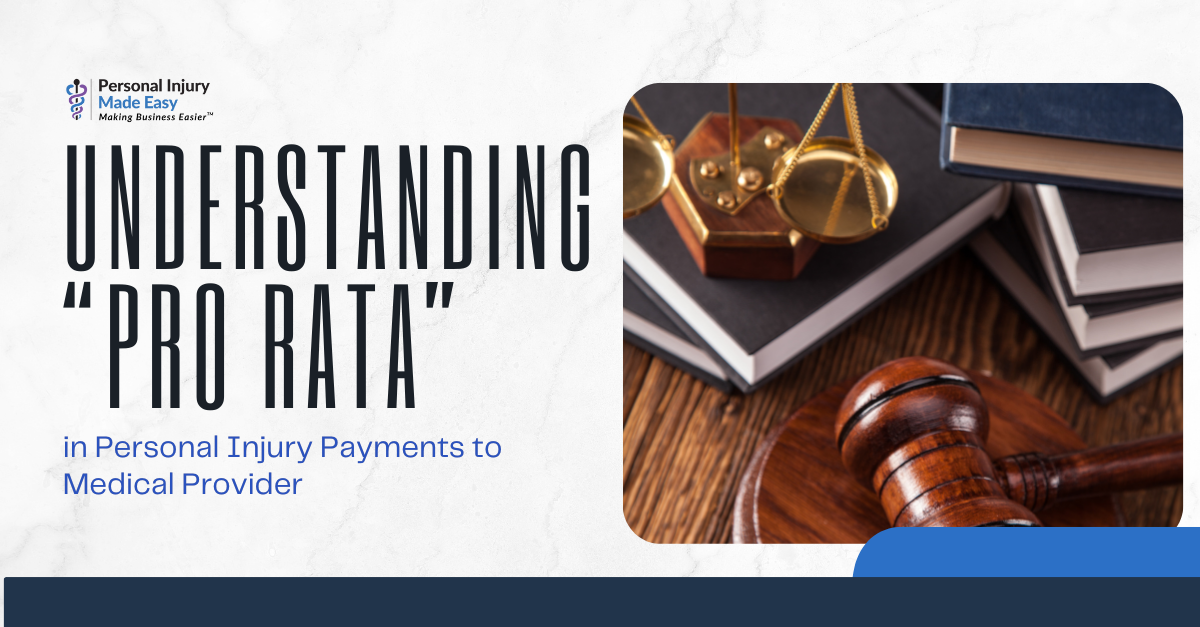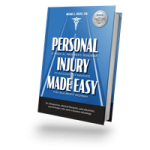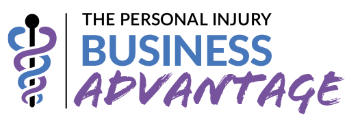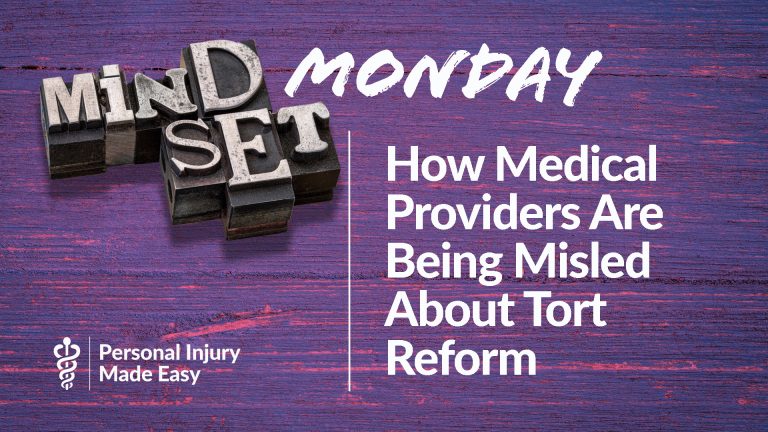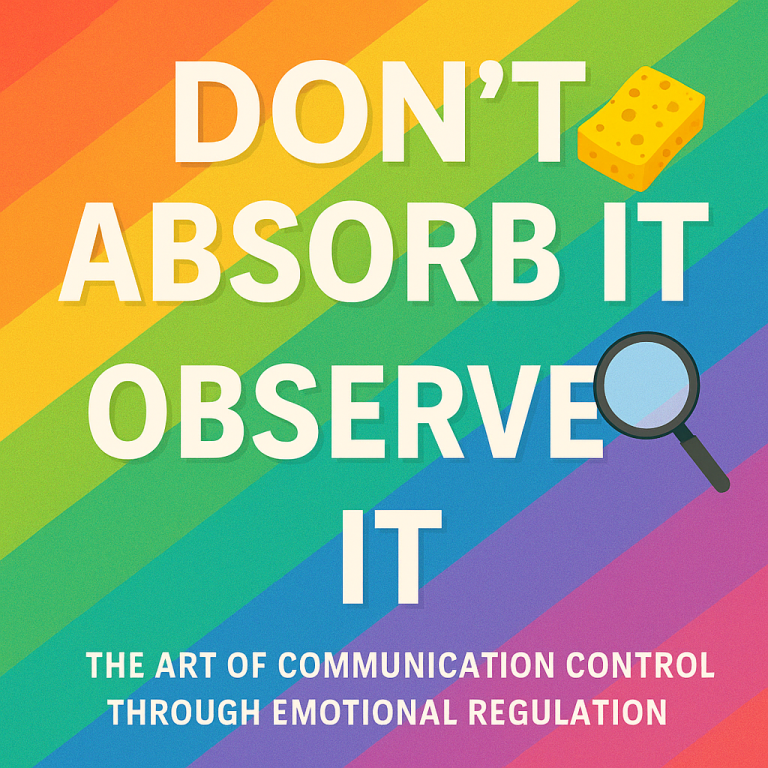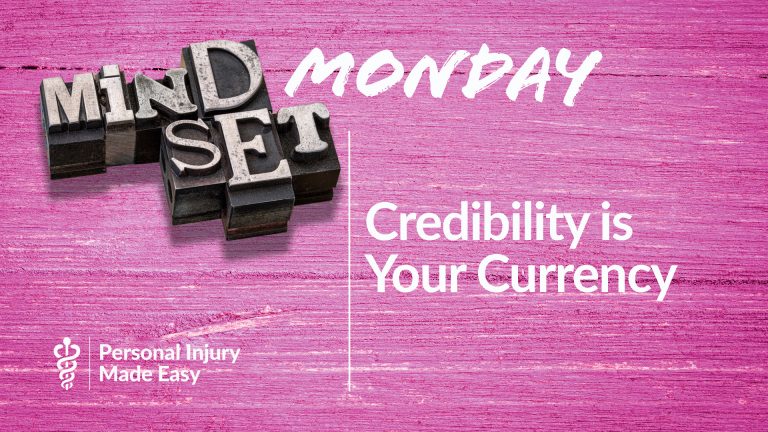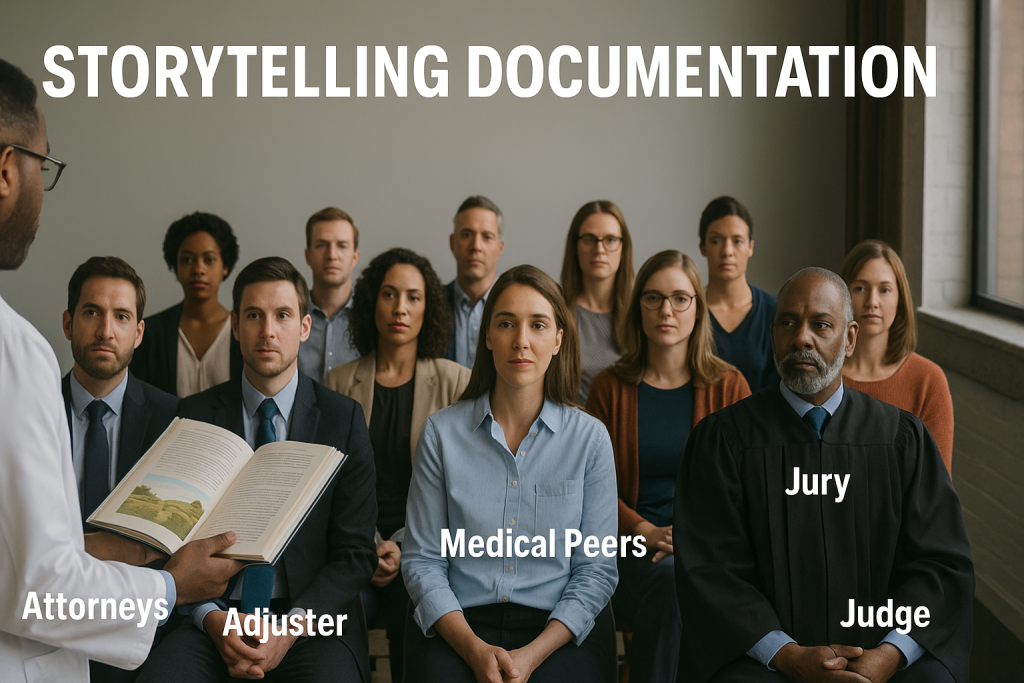
How Medical Documentation Shapes Justice in Personal Injury
Part 1: Why PI is Documented Differently
You’ve each been trained to document for clinical accuracy, compliance, insurance reimbursement, and continuity of care. In a typical healthcare setting, that’s often enough.
But not in personal injury (PI).
When treating PI patients, you’re no longer just recording what happened. You’re helping determine what happens next. You’re not just a medical provider. You’re a narrator, a translator, and a healthcare advocate.
And whether you realize it or not, what you document and how you document it can dramatically influence the financial outcome of a PI case.
And that changes everything.
In a personal injury case, your documentation isn’t a side note. It’s the main event. Your notes will be reviewed, quoted, cross-examined, and scrutinized not just by healthcare peers for the plaintiff or defense, but by non-medical professionals: insurance adjusters, defense attorneys, patient attorneys, judges, and juries. Some of these people may never meet your patient, or may meet or speak with them only once. They won’t see the pain. They won’t feel the patient’s physical, mental, and emotional struggle from the trauma. They won’t witness the effect on the patient’s daily life or the burden placed on their loved ones as simple activities are disrupted or even permanently shattered.
But what they will see and what they’ll use to assess credibility, causation, and compensation, is your documentation.
Your notes are no longer just a clinical tool. They become evidence. So, your role isn’t passive. It’s essential.
Let’s walk through the first five of twenty foundational practices that elevate your documentation from routine to legally powerful. To avoid overload, I’ve broken this into a four-part series, each covering five practical strategies.
Here’s the first five that set the foundation, beginning with how you handle the very first encounter:
1. Complete Intake Forms Through Direct Conversation
Stop handing out generic intake packets in the lobby or downloadable forms online to be filled out before arrival. Understand that the moment a patient fills out a form, those responses become permanent record. In PI, accuracy matters more than ever.
A checkmark or circled diagram doesn’t tell the whole story. Sit down with the patient. Ask what happened. How was their body positioned? What movement occurred during the impact? What symptoms appeared immediately, and what surfaced later? Ask about prior conditions. Was this area already vulnerable?
Then—after that guided interview—have them mark affected areas on a body diagram and complete the pain scale. But first, explain what a “3” or “7” actually means. This ensures consistency, especially if multiple providers will be using similar forms.
And don’t forget: personal injury is, by definition, trauma. You must consider not just physical injury, but emotional and psychological trauma as well. The growing body of research around post-traumatic stress disorder (PTSD) and traumatic brain injury (TBI) underscores the importance of screening early. Tools like concussion questionnaires are essential in PI, yet often overlooked. Failing to recognize these injuries isn’t just a missed diagnosis, it’s a missed opportunity for healing and a failure to help your patient and their attorney advocate for the full value of the case.
That first conversation and documentation builds the foundation.
Done well, the patient’s own paperwork supports their trauma. Done poorly, it creates inconsistencies that defense attorneys will exploit to lower the case value.
2. Avoid Detailed Accident Narratives or Diagrams
You are not a crash reconstructionist. Don’t document like one, and don’t let your patient do it either.
Avoid phrases about fault or road conditions. Your job is to document the mechanism of injury. Not the speed. Not the sequence of vehicles. Just the body’s response.
No diagramming the position of each vehicle at impact. Instead, say, “Rear-end collision; patient’s torso was thrown forward, then backward, resulting in … (medical impact).” That’s your lane. Stay in it and stay authoritative.
In states with modified comparative fault, if your patient is more than 50% at fault, no recovery. Fault matters in all states but especially in those states.
Don’t let your documentation create a potential liability issue or harm your patient’s credibility.
3. Always Include Onset History, and Injury Mechanism
Symptoms don’t exist in a vacuum. They’re part of a timeline, and your documentation should reflect that.
If a patient reports shoulder pain, explain its development: “Patient braced against steering wheel during collision; right arm extended, resulting in … (medical impact).” This draws a direct clinical bridge between the trauma and the complaint.
Don’t just list what hurts. Explain how it came to hurt.
4. Establish Medical Necessity, and Reinforce It Throughout Care
Medical necessity is often misunderstood. It’s not just justifying what you’re doing, it’s showing why the patient needs it and why they continue to need it.
Link every modality, therapy, pain intervention, surgery and follow-up to functional or objective deficits: ROM loss, pain with movement, strength testing, or ADL interference. For example: “Patient demonstrates 50% reduced cervical rotation to the left with associated pain; unable to … (ADL impact).”
That’s not just a symptom. That’s a clinically and legally relevant reason for care.
5. Document All Injuries, Even Those You Aren’t Personally Treating
You don’t have to treat every injury. But you do have to acknowledge them.
One common provider mistake is under-documenting or omitting diagnoses they don’t plan to treat. PI requires a whole-body approach to assessment and impairment. Even if a symptom falls outside your specialty, you must note it. Refer it. Maybe image it. Certainly, flag it.
For instance: “Patient reports ongoing headaches; referring out to neurologic care. Not addressed in this clinic.” This shows coordination, comprehensive care, and awareness. It also shuts down the argument that “their treating doctor never even mentioned it.”
You may not be treating an area of injury caused by the PI incident. Don’t help adjusters and defense attorneys and don’t take away the attorney’s ability to argue inclusion by you failing to note it.
Final Takeaway for Part 1
In personal injury, you’re not just writing notes. You’re telling the healthcare story of your patient from injury to recovery or stabilization, and sometimes even to permanent impairment.
Every detail matters. Your role isn’t just to treat. It’s to translate. Translate trauma into facts. Translate suffering into medical records. And when you document with precision, purpose, and consistency, you don’t just support healing. You support justice.
In Part 2, we’ll build on this by exploring how to document a patient’s unique vulnerabilities and recovery story in ways that resonate with both clinical and legal audiences. Stay tuned.


